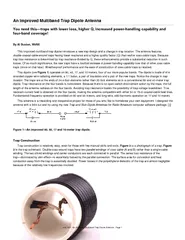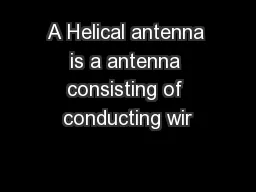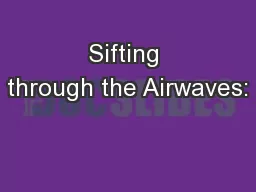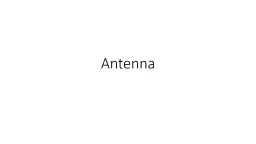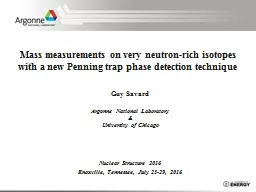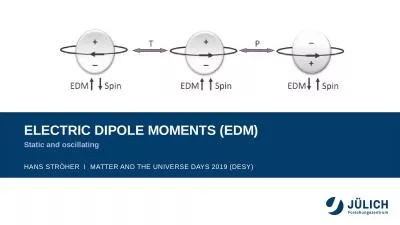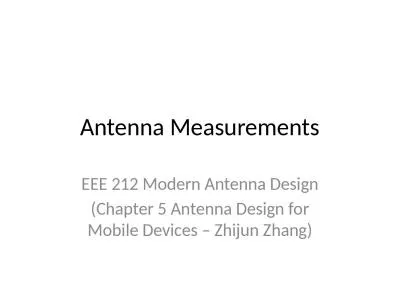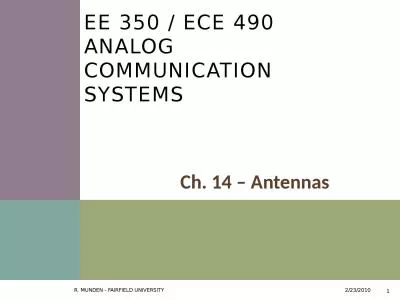PDF-An Improved Multiband Trap Dipole Antenna You need thi
Author : celsa-spraggs | Published Date : 2015-05-30
The antenna features doublecoaxialcablewound traps having lower reactance and a higher quality factor Q than earlier coaxcable traps Because trap loss resistance
Presentation Embed Code
Download Presentation
Download Presentation The PPT/PDF document "An Improved Multiband Trap Dipole Antenn..." is the property of its rightful owner. Permission is granted to download and print the materials on this website for personal, non-commercial use only, and to display it on your personal computer provided you do not modify the materials and that you retain all copyright notices contained in the materials. By downloading content from our website, you accept the terms of this agreement.
An Improved Multiband Trap Dipole Antenna You need thi: Transcript
The antenna features doublecoaxialcablewound traps having lower reactance and a higher quality factor Q than earlier coaxcable traps Because trap loss resistance is determined by trap reactance divided by Q these enhancements provide a substantial r. COSY. Step 1: Spin . coherence . and systematic error . studies. (Proposal 216.1). February. 24, 2014 Frank Rathmann on behalf . of. JEDI. 42. nd. Meeting of the COSY . Joe Horanzy . AA3JH. April 4. th. , 2013 K3DN Presentation . Agenda. Awards. Impedance. Measuring Equipment. Picking the Antenna. Antenna components with construction tips and theory. Putting it all together. Typically the diameter of the ground plane should be at least 3.. λ. /4. The parameters of helical antenna are-. D- diameter of a turn on the helix antenna.. C- circumference of a turn on the helix antenna.. Luke 21:34-36. 34. . “But take heed to yourselves, lest your hearts be weighed down with carousing, drunkenness, and cares of this life, and that Day come on you unexpectedly. . 35. . For it will come as a snare on all those who dwell on the face of the whole earth. . Solitons. Makoto Kobayashi. KEK. 2011/10/27. Recollections of Nagoya Univ.. Under graduate 1963-1967. Graduate 1967-1972. . Chiral. . s. ymmetry. . Maskawa. , Kondo, Hattori. Hande Akbas. Kealan Naughton. Alexander Fuchs-Fuchs . Kingdon Trap. Kingdon Trap with SIMION. Create a working Kingdon trap in SIMION. Results - Energy range of potentially trapped particles. Improvements. Efficient and Scalable Multiband RF Harvesting. Aaron N. Parks. Prof. Joshua R. Smith. Sensor Systems Laboratory. Dept. of Electrical Engineering. Dept. of Computer Science and Engineering. University of Washington. Josh . Alfrey. , Andrea Boyer, . Philip Cutler, Don . Hendrick. The Group. Josh . Alfrey. . – concept, designer, construction. Andrea Boyer . – concept, journalist/editor. Philip Cutler . – concept, calculations. . Baghelani. 1. Antenna. 2. What is antenna?. Antenna i. s an electrical device which converts . electric power. into . radio waves. , and vice versa.. In . transmission. , a radio transmitter supplies an electric current oscillating at . Mass measurements on very neutron-rich isotopes with a new Penning trap phase detection technique Guy Savard Argonne National Laboratory & University of Chicago Nuclear Structure 2016 Knoxville, Tennessee, July 25-29, 2016 Hans . ströher. . I . Matter and the universe days 2019 (. desy. ). Static and oscillating . Electric dipole moments. Introduction. EDM. : a permanent . separation. . of. positive . and. negative . (Chapter 5 Antenna Design for Mobile Devices – . Zhijun. Zhang). Passive measurements. Network Analyzer. Prototype. Passive . Anechoic . Chamber Measurements. Absorber Types. Balanis. : Antenna Design. 1. Ch. . 14 . – . Antennas. EE 350 / ECE 490. Analog Communication Systems. Objectives. Describe the development of the half-wave dipole antenna from transmission line theory. Define the properties of antenna reciprocity and polarization. Makoto Kobayashi. KEK. 2011/10/27. Recollections of Nagoya Univ.. Under graduate 1963-1967. Graduate 1967-1972. . Chiral. . s. ymmetry. . Maskawa. , Kondo, Hattori. Deep inelastic scattering.
Download Document
Here is the link to download the presentation.
"An Improved Multiband Trap Dipole Antenna You need thi"The content belongs to its owner. You may download and print it for personal use, without modification, and keep all copyright notices. By downloading, you agree to these terms.
Related Documents

